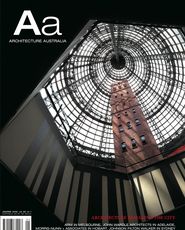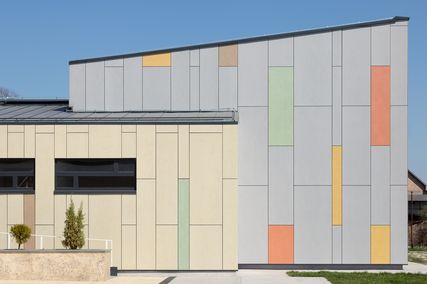ARCHITECTURE REMAKING THE CITY
This issue of Architecture Australia brings together four remarkable projects. Each is quite different in its aesthetic and its articulation, but the projects share similar motivations. All seek to draw an existing building or precinct into the fabric of the city, and in so doing to help remake a section of the city. These are all large, accomplished projects in their own right, but their architectural impact, and their architectural ambitions, extend well beyond the skilful production of an individual building. Melbourne Central, the Sydney Hilton and the new work at UniSA’s City West campus all open themselves up to their respective cities; they allow the city to influence them and, in turn, seek to have broader impact on their urban environments. Melbourne Central breaks open the sealed box of the shopping centre, drawing the network of city lanes into the body of the building; the rebuilding of the podium of the Sydney Hilton in a newly transparent form allows the inhabitants to engage with the city, and carves a new “street” through the city block; in Adelaide three new buildings open up the City West campus, contributing to the area’s urban regeneration while engaging with the language of the existing campus. On Hobart’s Sullivan’s Cove Robert Morris-Nunn + Associates has taken a different tack. Here the architects pull the public into the interior of the complex, into a new space which is in the tradition of the public drawing room, but is quite distinct from the public promenades of the wharfs. This, together with the hotel and other commercial activities accommodated in the project, has returned a previously derelict group of heritage buildings to the public life of Hobart.
Each of these projects encourages us to consider the public role of buildings, even when those buildings are for predominantly commercial uses, and to consider architecture as a contribution to the urban realm, rather than the highly skilled production of isolated objects.
Other articles in the issue also invite readers to consider architecture in its broader frame. In an interview on the occasion of the RAIA’s gift of a portrait to the National Portrait Gallery Romaldo Giurgola and Pamille Berg discuss the public responsibility of architecture, as well as the role of art in architecture – its ability to extend and identify the content of architecture – and processes of working which enable productive encounters between architecture and art ›› The “how” of architecture is also explored in two other quite different pieces. In the first article in Practice, a new section of Architecture Australia, Anthony Kearn outlines the risk management issues facing architecture and makes a passionate plea for the profession to address this collectively. If we don’t, he argues, the ability of architecture to make meaningful contributions to the public realm will be severely compromised.
How one might effectively work in architecture is also canvassed from a different angle by the ten women architects who contribute their personal responses to Paula Whitman’s Going Places survey on women’s career progression in architecture. They consider how one can work in ways which are satisfying both personally and professionally, and reflect on how success and satisfaction might be measured and defined. Their responses are all quite different, reflecting the diversity of women involved in architecture, but the desire to make “good” architecture, which makes effective social and public contributions runs through them all, as it does through the survey results. So what structures can enable all those smart women out there to contribute effectively? The answers are different for different people, and different generations, but the broad issues raised are fundamental to the profession as a whole, and need to be addressed by both women and men in architecture. Here too, the viability of the profession is at stake.JUSTINE CLARK















